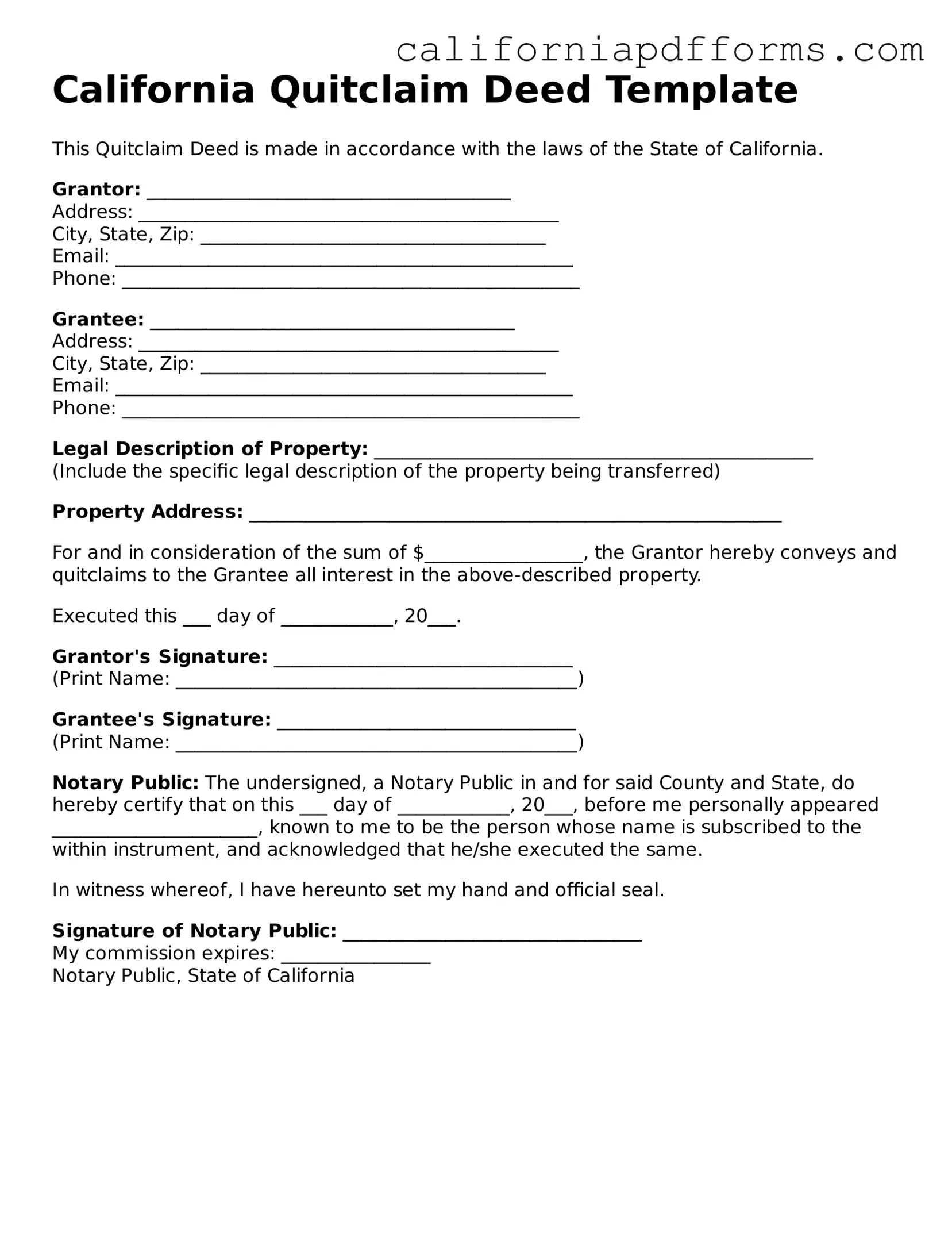What is a Quitclaim Deed in California?
A Quitclaim Deed is a legal document used to transfer ownership of real estate from one party to another without making any guarantees about the title. Essentially, the person transferring the property (the grantor) relinquishes their interest in the property to the recipient (the grantee). This type of deed is often used among family members or in situations where the parties know each other well.
When should I use a Quitclaim Deed?
Quitclaim Deeds are commonly used in various scenarios, including:
-
Transferring property between family members.
-
Divorces, where one spouse gives up their interest in the property.
-
Transferring property into a trust.
-
Clearing up title issues, such as removing an ex-spouse from the title.
However, it’s important to note that a Quitclaim Deed does not guarantee that the property is free from liens or other claims.
How do I complete a Quitclaim Deed in California?
To complete a Quitclaim Deed, follow these steps:
-
Obtain a Quitclaim Deed form. These can be found online or at legal stationery stores.
-
Fill in the names of the grantor and grantee, along with the property description.
-
Sign the document in front of a notary public. Notarization is crucial for the deed to be legally valid.
-
Record the deed with the county recorder's office where the property is located. This step is essential to ensure the transfer is public and official.
Do I need an attorney to create a Quitclaim Deed?
While it is not legally required to have an attorney prepare a Quitclaim Deed, consulting with one can be beneficial. An attorney can provide guidance on the implications of the transfer and ensure that the deed is filled out correctly. This can help prevent future disputes or complications.
A Quitclaim Deed should include the following information:
-
The names and addresses of the grantor and grantee.
-
A legal description of the property being transferred.
-
The date of the transfer.
-
The signature of the grantor, notarized.
Additional details, such as the consideration (the value exchanged for the property), may also be included.
Are there any tax implications when using a Quitclaim Deed?
Generally, transferring property via a Quitclaim Deed may not trigger a tax event if it is a gift between family members. However, it’s wise to consult a tax professional to understand any potential implications, especially if the property has significant value or if there are outstanding liens.
Can a Quitclaim Deed be revoked?
Once a Quitclaim Deed is executed and recorded, it cannot be revoked unilaterally. The grantor has given up their interest in the property. If there is a need to reverse the transaction, a new legal document would need to be created, such as a Deed of Reconveyance or a new Quitclaim Deed transferring the property back to the original owner.
What happens if the grantor has outstanding debts?
Transferring property via a Quitclaim Deed does not eliminate the grantor's debts. Creditors may still have claims against the property. If the grantor has significant debts, it may be wise to consult with a financial advisor or attorney before proceeding with the transfer.
Is a Quitclaim Deed the same as a Warranty Deed?
No, a Quitclaim Deed and a Warranty Deed are different. A Warranty Deed provides a guarantee that the grantor holds clear title to the property and has the right to transfer it. In contrast, a Quitclaim Deed offers no such guarantees. It simply transfers whatever interest the grantor has, if any.
How can I obtain a copy of a recorded Quitclaim Deed?
To obtain a copy of a recorded Quitclaim Deed, you can visit the county recorder's office where the deed was filed. Many counties also offer online access to property records. You may need to provide specific information about the property, such as the address or the names of the parties involved, to locate the deed.
